Card games for children to learn languages stand out as a unique way to break down a challenging task into manageable pieces. After all, learning a language well requires years of practice; it’s a test of endurance, not a sprint. And if we want children to flourish in the long term, there are three critical steps we need to provide them with: a toehold, something to maintain their interest, and something that scales. Luckily, language card games allow us to meet all three of those requirements and I’ll explain in greater detail how and why later on, but for now, let me deal you in! Here’s my top 10 card games for children to learn languages!
Super Concentration – 1
Concentration is a fantastic game for all ages to improve their spatial memory and recollection of certain facts or information at the same time. Players mix pairs of matching cards and spread them out face down on the table. Then, they take turns flipping over two cards. If the cards match, they may take them and go again. If the cards don’t match, they must replaced. Once all the cards are picked up, the player with the most matches wins!
But if you’re already over-familiar with that game and you want to put a twist on a classic, why not try Super Concentration? In Super Concentration, we up the ante. Instead of picking up pairs of cards, we pick up three of a kind! Find a way to make sets of three cards that go together and let players flip over three cards on their turn. This makes a simple game markedly more advanced.
Games Already In-Use – 2
Don’t forget that card games children already know well can be adapted for language learning purposes. With a standard deck of playing cards, what about games like Go Fish, Crazy Eights, or Poker? Or perhaps a trading card game like Pokemon, Yu-Gi-Oh!, or Magic: The Gathering? The point is that during these games, players can only use their target languages when they speak. Take a close look at the card games kids are already playing and see how you can work with those. One big key to motivation is relevance. If we can make a language accessible through a medium kids already like to use, that’s half the battle!
If we can make a language accessible through a medium kids already like to use, that’s half the battle!
Downloadable Games – 3
On this site, we have several games that you can download, print, cut out, and start playing with immediately! Click HERE to learn more about them. One of our most popular is Language Guardians 2.
These games are great if you need something fast. They can be a wonderful activity for you and your family and friends, who might be stuck inside. Players can cut the cards out together and start playing very quickly.
UNO On Language-Learning Steroids – 4
Another card game that seems to capture the minds of young and old alike is UNO. And I have seen some illuminating videos where language teachers ask their students to say the name of a color or number in their target language before they can put their card down. Again, this is highly effective because it is highly inclusive and it makes something intimidating (learning a language) seem more approachable.
If you’re looking for something a bit more along these lines, though, I have an UNO-inspired card game specifically designed for language learning called Language Guardians. Language Guardians will seriously help you level up. And, if you like UNO, Language Guardians is simply a must have!
Learn Another Culture’s Card Game – 5
On the flipside, rather than play card games from our culture in our target languages, we can learn the card games the native speakers of our target language play.
Just like native English speakers will be familiar with Go Fish, native Italian speakers will be familiar with Scopa, native Chinese speakers will be familiar with Fighting The Landlord, and native Russian speakers will be familiar with Durak. And just about everybody is familiar with Poker, though they play it in different ways. Why not look to the card games of other cultures for inspiration? When you learn how to play those games, you pull double duty, learning about the language and the culture at the same time.
The Leitner Box – 6
What? You don’t know what a Leitner Box is?! You must be really new to my site!
The Leitner Box is what we call a spaced repetition system, which means practitioners review concepts (written on flashcards) at exponentially increasing intervals of time, rather than every day. It can be used to study just about anything, including languages. And while not technically a game, it does gamify the learning process. Actually, I take that back. You could make it very much like a game by having a race to see who can graduate their flashcards through their Leitner system first.
To learn more about how to get started with The Leitner Box, you can check out my how-to video here.
Fighting Flashcards – 7
Another sweet way to use flashcards besides the Leitner Box is with Fighting Flashcards. In fact, you can use the same exact flashcards you use with your Leitner Box in conjunction with Fighting Flashcards… how’s that for efficiency?!
Fighting Flashcards turns flashcard review into something more like a wizard’s duel and less like a chore. The way it works is, each turn a player draws one Fighting Flashcard and reads off a challenge. If they can complete that challenge with their next flashcard, they can discard that flashcard. If they can’t, that flashcard gets recycled. The first player to discard all of their flashcards wins!
Oh! And one more thing: just like the Leitner Box, Fighting Flashcards can be used with just about any kind of flashcards or subject, similar to the Leitner Box. More bang for your buck!
Card games for children to learn languages may be more cutting-edge than you’d expect!
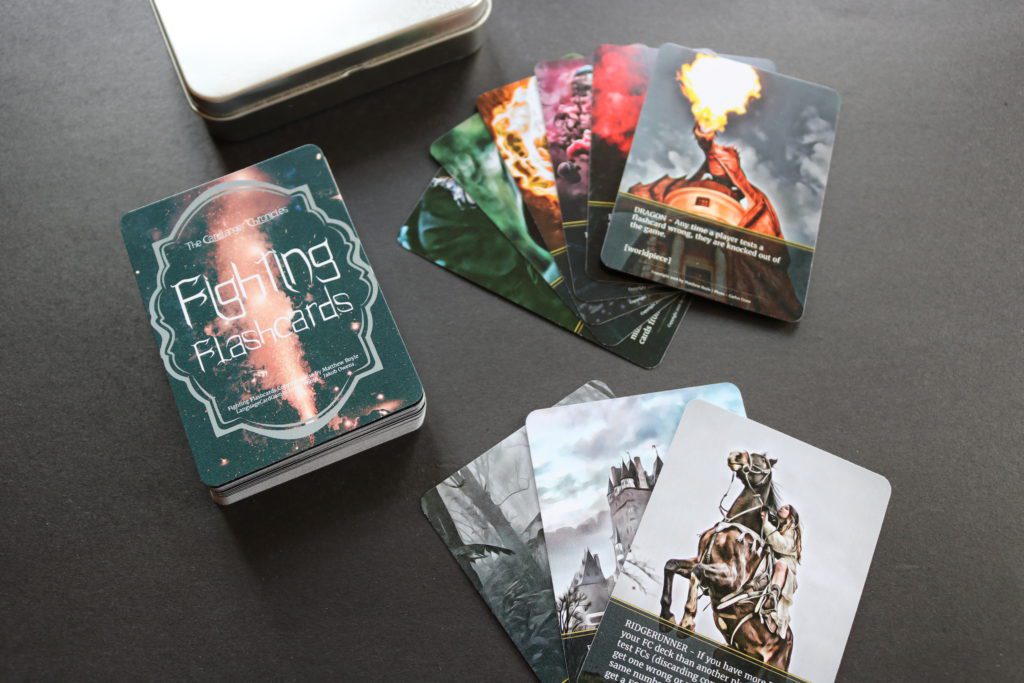
The Mind Palace – 8
I don’t know if you’ve heard of the Mind Palace. But let’s just say it’s what world memory championship winners use to memorize, say, the order of a shuffled deck of cards in just a minute or so. Or, maybe, the order of a stream of faces passing them by in a bicycle race.
The great news is that we, too, can use this method to learn languages. The secret of this method is it relies on the power of association, which is essentially how lasting memories are formed. You see, lasting memories are linked up with something else; they don’t exist in isolation.
Lasting memories are linked up with something else; they don’t exist in isolation.
To practice the Mind Palace, simply draw a card (with the language/word you want to study written on it) and try to associate that word vividly with a room of your house. Then, draw the next card, and associate it vividly with the next room in your house and so on. Continue drawing cards as you mentally “walk” around your house’s rooms (or just different areas if you don’t have many rooms). Then, put your cards away and, again, mentally walk through your house and see if you can recall the words you put in each place along the way.
For younger children, we can tweak this idea and call it the Card Palace, and rather than only do this activity mentally, which can be a bit abstract, we can actually walk with children from place to place and put a real card in that place. Then, we can walk through the places again and try to remember each card that is in that place before we enter it.
Flashcards By Linguacious – 9
Linguacious sells an impressive collection of stunning flashcards with a clean layout and QR code functionality, which takes players to pronunciation by real native speakers. They are also available in multiple languages (Brazilian Portuguese, English/ESL, Hebrew, French, German, Greek, Italian, Mandarin Chinese, Polish, Russian, Spanish, and Ukrainian) and can be used to play many different kinds of games. The cards were designed by Ph.D. language learning experts to boot!
One reason I really like this company is that they continually strive to add new vocabulary and to put out fresh decks of cards in new languages. If you’re in the market for a set of flashcards for yourself, children, or students, I recommend you scan through Linguacious’ products first to see if they have something suitable for you!
For The Young – 10
For the youngest of the young, simply recognizing or remembering the name of large or over-sized flashcards or one-sided cards is best, and yet, there’s no reason why this can’t be made more exciting with multiple variations and games. Assuming you have a large deck of picture cards or something similar, I want to point you towards an extremely popular video on YouTube. In this video, Carol Read shows us some practical activities for children under 12.
Design A Card Game – 11
This next idea demands some higher-order thinking. It would be perfect for older, more experienced children, or children who are ready to create around their target language. Ask them to come up with a card game that can help teach their target language to others or address a problem they have in their studies. Assist them to draft a copy of the rules, test the game, and hone the game. As well all know, to create requires a deeper set of skills than mere memorization, so don’t leave that process out!
You know, it’s easier than ever before to publish and market your own game these days on sites like Make Playing Cards or The Game Crafter. If you’re looking for a real-world application for your child’s work, this one’s a no-brainer. You can design and sell a game right through a single site!
The Big Three
In the introduction, I mentioned three critical steps for children’s long term success. Those are: a toehold, something to build on, and something that scales. Here in the conclusion, I’d like to explain what I mean by that.
Language learners need three things: a toehold, something to build on, and something that grows as they grow.
First, a toehold. A toehold is something that helps someone get started. Getting up the courage to begin learning a language can be tough, even for adults, especially if the language itself is hard or the people around you already speak it much better than you do. Card games give us a toehold because they are learning wrapped in a fun package. Moreover, they are inclusive. Many different types and levels of learners can play together and get something out of the exercise.
Second, something to build on. Card games like the ones I’ve outline above easily provide children with a base competency and confidence they can move on to connect with more advanced lessons. Children can parlay their victories in the card games into other types of activities they’re hesitant about.
Third, something that scales. Once you have a method that you like and use regularly, it’s important that that method grows as you grow. Thankfully, most card game companies offer expansion decks of cards with added vocabulary and new rules to enhance the original sets. But if they don’t, we can always go DIY and make our own, can’t we?! In any case, we certainly will need an avenue for extended learning opportunities and that’s not hard at all to achieve with card games.
Card Games For Children To Learn Languages Summary
In conclusion, I think few would disagree that card games boost children’s language learning skills in a variety of ways. Anything from as simple a game as Concentration, all the way up to something as challenging as designing a game, can encourage children of all ages to shake off the dust of apathy, boredom, and laziness. Don’t just take my word for it, however. Try an idea mentioned above today and see if it doesn’t inspire your child to even greater heights!
If you enjoyed this article or received a new idea from it, share it with fun-loving individuals you know!
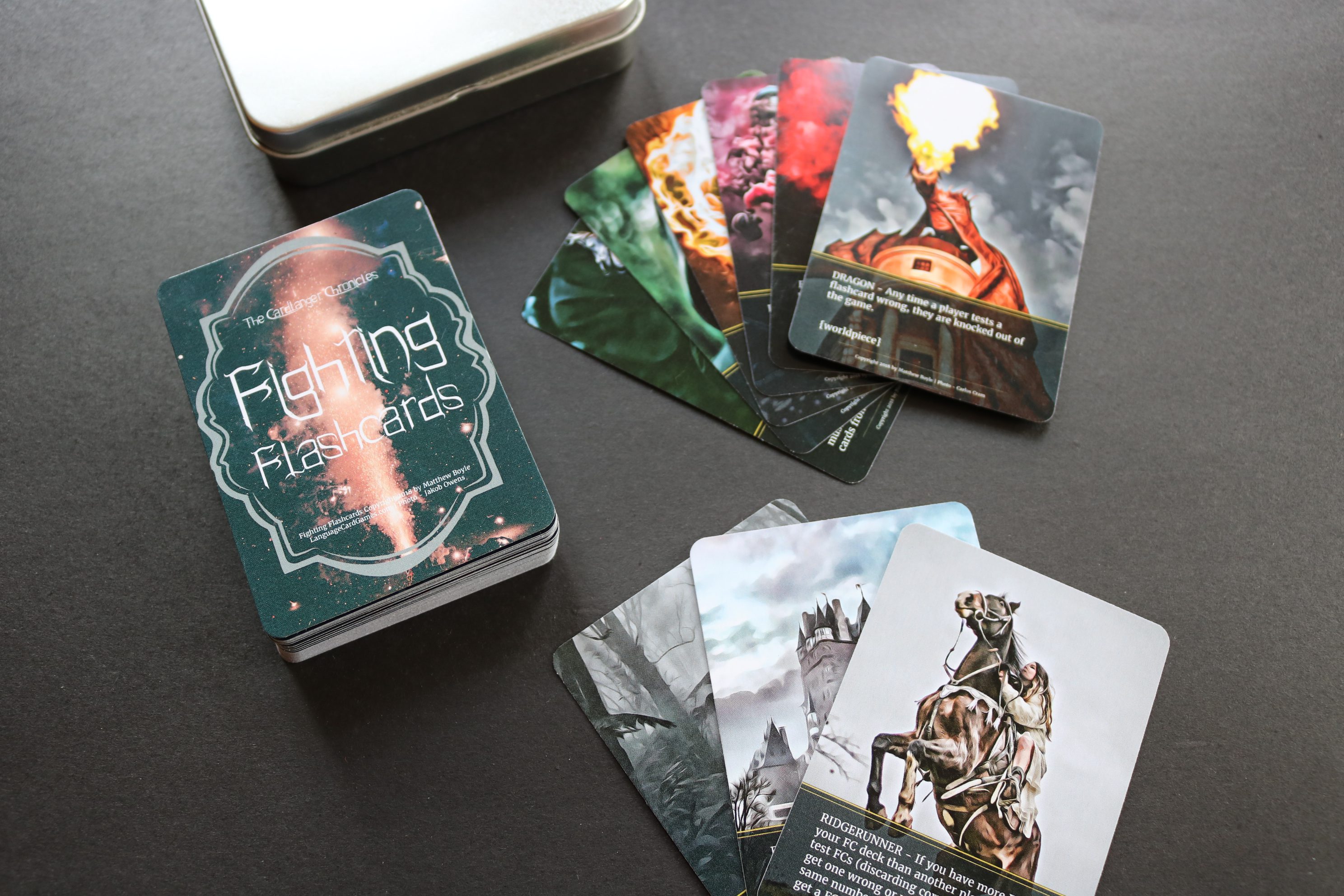
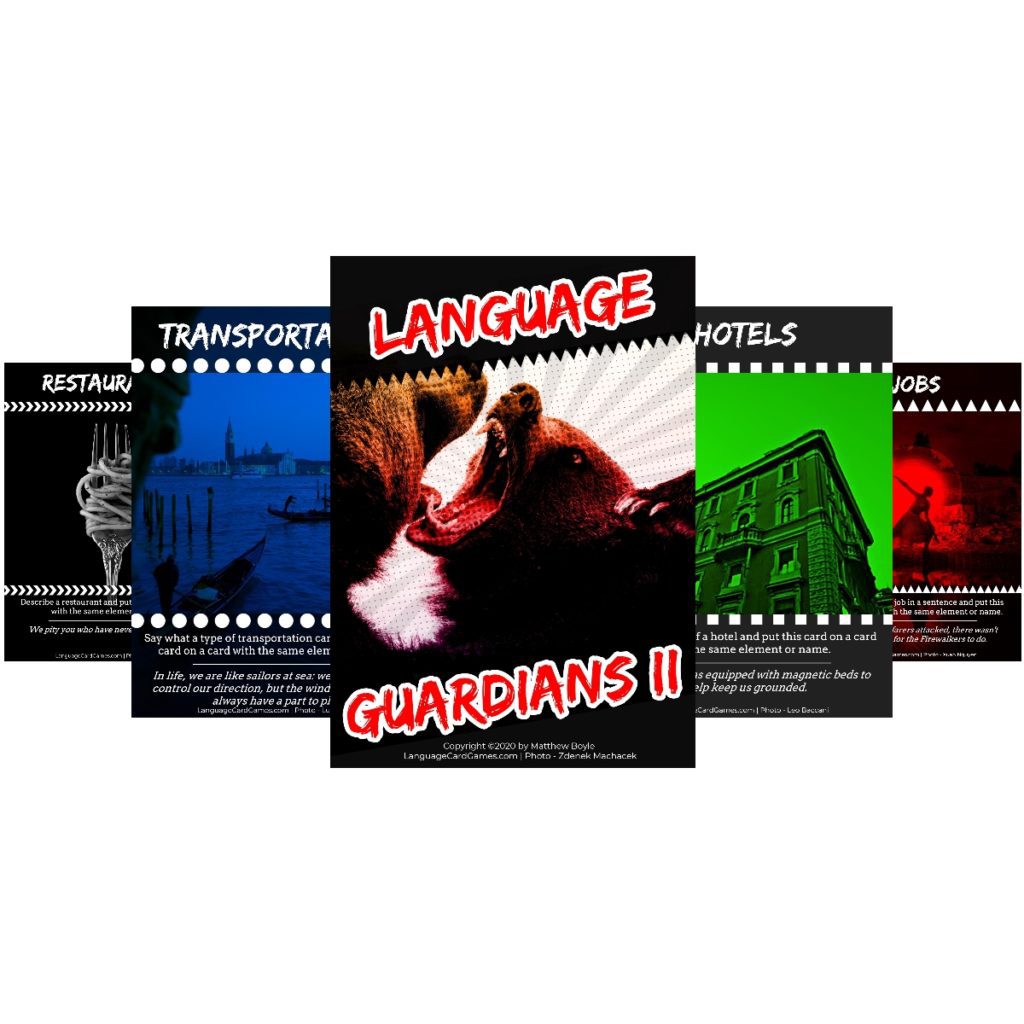
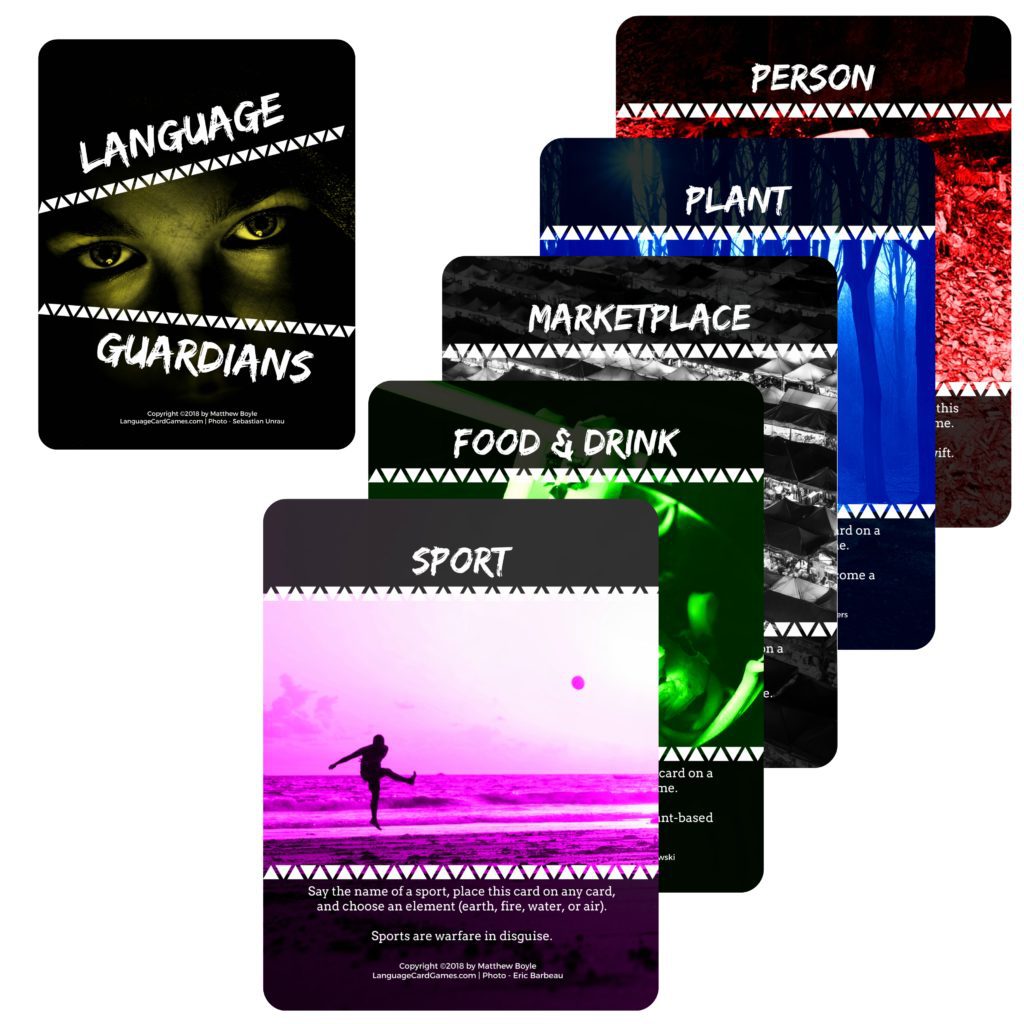
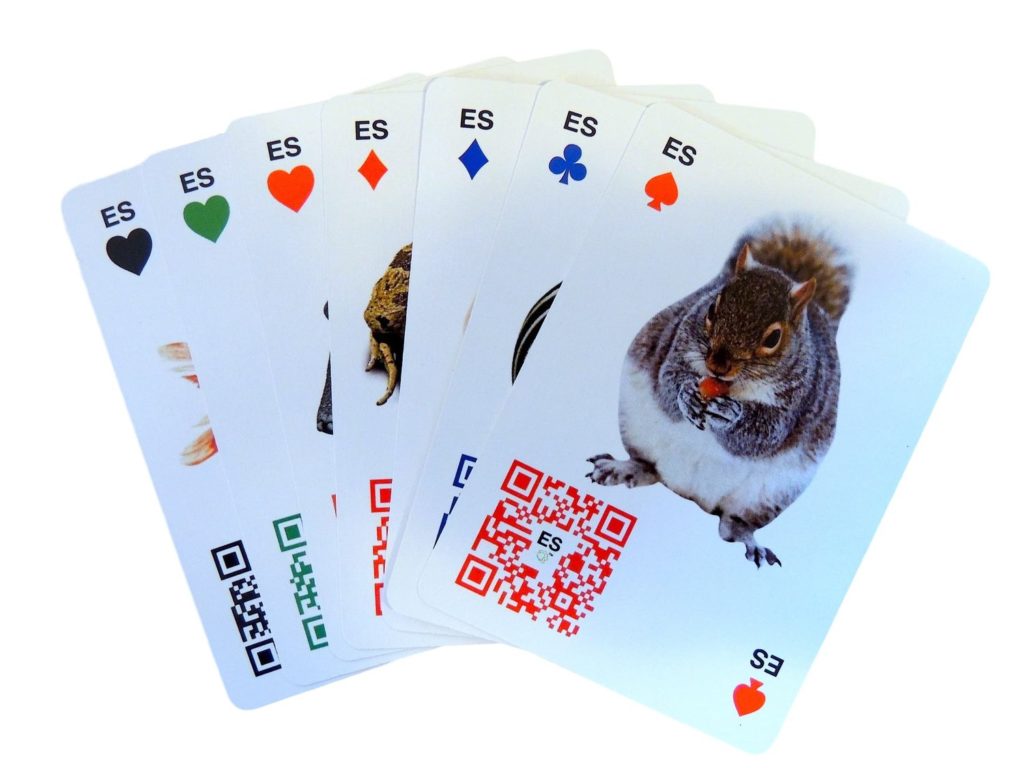

I’m truly enjoying the design and layout of your website.
It’s very easy on the eyes which makes it much more enjoyable.
Thank you so much for your kind comment! My goal, indeed, is to make the website exceedingly easy for the eyes to imbibe!